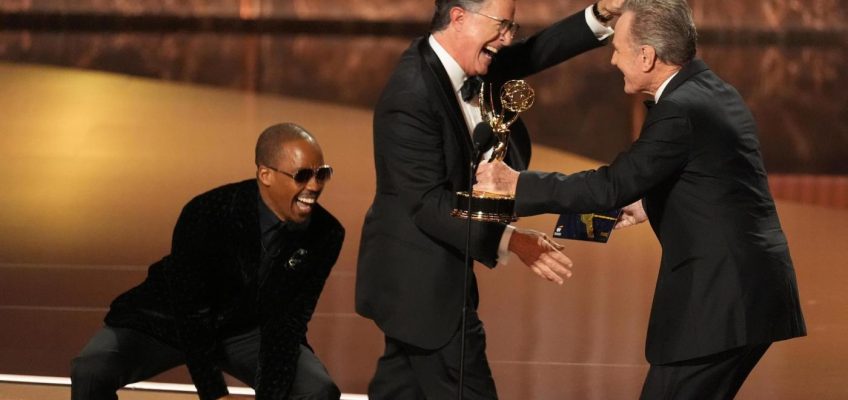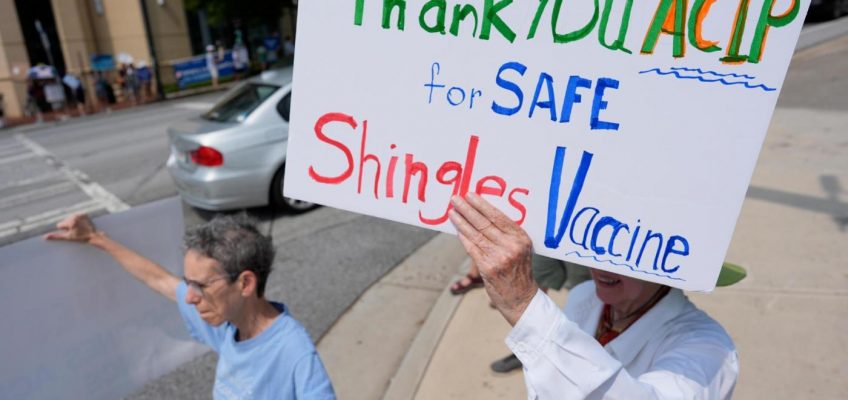By MIKE STOBBE, Associated Press
NEW YORK (AP) — Health Secretary Robert F. Kennedy Jr.’s new vaccine advisory committee meets this week, with votes expected on whether to change recommendations on shots against COVID-19, hepatitis B and chickenpox.
The exact questions to be voted on Thursday and Friday in Atlanta are unclear. Officials at the Department of Health and Human Services did not immediately respond to questions seeking details to a newly posted agenda.
But some public health experts are worried that the votes will — at a minimum — raise unwarranted new questions about vaccines in the minds of parents.
Perhaps even more consequential would be a vote that restricts a government program from paying for vaccines for low-income families.
“I’m tightening my seat belt,” said Dr. William Schaffner, a Vanderbilt University vaccines expert.
The panel, the Advisory Committee on Immunization Practices, makes recommendations to the director of the Centers for Disease Control and Prevention on how already-approved vaccines should be used. CDC directors have almost always accepted those recommendations, which are widely heeded by doctors and guide vaccination programs.
Kennedy, a leading antivaccine activist before becoming the nation’s top health official, fired the entire 17-member panel earlier this year and replaced it with a group that includes several anti-vaccine voices.
Here’s a look at the three vaccines being discussed:
COVID-19
Before Kennedy was health secretary, ACIP would typically vote in June to reaffirm recommendations for shots against respiratory viruses that sicken millions of Americans each fall and winter.
This past June, Kennedy’s ACIP voted to recommend flu shots for Americans but was silent on COVID-19 shots.
Before that meeting, Kennedy announced he was removing COVID-19 shots from the CDC’s recommendations for healthy children and pregnant women. The move was heavily criticized by doctors’ groups and public health organizations, and prompted a lawsuit by the American Academy of Pediatrics and other groups.
Days after Kennedy’s announcement, CDC officials said families could still get the 2024-2025 version of COVID-19 shots for their kids in consultation with their doctors. That clarification meant shots would still be covered by the federal government’s Vaccines For Children program, which pays for shots for families who lack money or adequate health insurance coverage. It’s now responsible for roughly half of childhood vaccinations in the U.S. each year.
As with flu shots, however, there are new COVID-19 formulations each fall, to account for changes in which strains are circulating. The committee has not yet voted on whether to recommend this season’s COVID-19 shots or whether those shots should be covered by the VFC program.
Further complicating the picture: When the FDA last month licensed this fall’s COVID-19 shots, the agency took the unusual step of narrowing their use for healthy younger adults and children.
If the ACIP simply follows that, and if there is no additional clarifying language from the CDC, then “that would take away access for roughly half of America’s kids,” said Dr. Sean O’Leary of the American Academy of Pediatrics.
The pediatricians group urges that vaccinations continue for all children ages 6 months to 2 years.
FILE – The campus of Centers for Disease Control and Prevention is seen in Atlanta, on Wednesday, June 25, 2025. (AP Photo/Mike Stewart, File)
Hepatitis B
Hepatitis B can cause serious liver infections. In adults, the virus is spread through sex or through sharing needles during use injection-drug use.
But the virus also can be passed to a baby from an infected mother, and as many as 90% of infected infants go on to have chronic infections.
A hepatitis B vaccine was first licensed in the U.S. in 1981. In 1991, the ACIP recommended a dose within 24 hours of birth for all medically stable infants who weigh at least 4.4 pounds.
Infant vaccinations are stressed for women who have hepatitis B or, crucially, who have not been tested for it. The infant shots are 85% to 95% effective in preventing chronic hepatitis B infections, studies have shown.
Newborn hepatitis B vaccinations are considered a success, and no recent peer-reviewed research shows any safety problem with giving kids the shots on their first day of life, Schaffner said.
But Kennedy’s ACIP members suggested in June they wanted to revisit the guidance.
Schaffner noted that health officials used to rely on screening mothers before birth but that many cases were missed.
“There were lots of failures,” he said. “And so there were continuing transmissions from mother to child.”
Trump threatens to take over DC police again over immigration enforcement
Vance hosts Kirk’s radio show and says he’ll honor his friend by being a better husband and father
Fired federal prosecutor Maurene Comey sues Trump administration to get her job back
Trump administration boosts HBCU funding after cutting grants for Hispanic-serving colleges
Annual Hispanic Heritage Month celebrations make adjustments in current political climate
MMRV
Chickenpox was once a common childhood annoyance, causing an itchy skin rash and fever.
But the highly contagious virus can also lead to complications such as skin infections, swelling of the brain and pneumonia. Severe cases are more common among teens and adults who get it for the first time. The virus — called varicella — also can reactivate later in life and cause the painful illness called shingles.
The government first recommended that all children get a chickenpox vaccine in 1995, leading to a dramatic drop in cases and deaths.
In 2006, a combination MMRV shot — measles, mumps, rubella and varicella — was licensed. The CDC initially recommended that doctors and parents use the combo shot over separate MMR and varicella injections.
But within a few years, studies showed children who got the combo shot more often developed a rash, fever and — in rare instances — seizures after vaccination compared with children who got separate shots.
In 2009, the ACIP changed its recommendation, removing the preferential language and saying either the combination shot or separate shots were acceptable for the first dose.
Today, most pediatricians suggest separate doses for the first shot, but give the combined shot for the second dose, pediatrics experts say.
Again, there’s no new evidence about harms from MMRV shots, said O’Leary, of AAP.
Why revisit it now?
“This version of the ACIP is an orchestrated effort to sow distrust in vaccines,” O’Leary said.
The Associated Press Health and Science Department receives support from the Howard Hughes Medical Institute’s Department of Science Education and the Robert Wood Johnson Foundation. The AP is solely responsible for all content.




